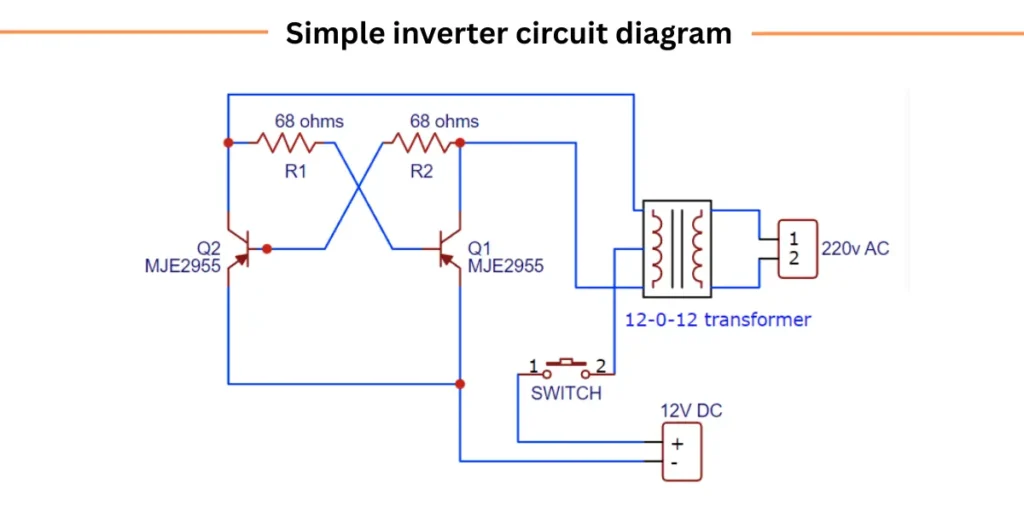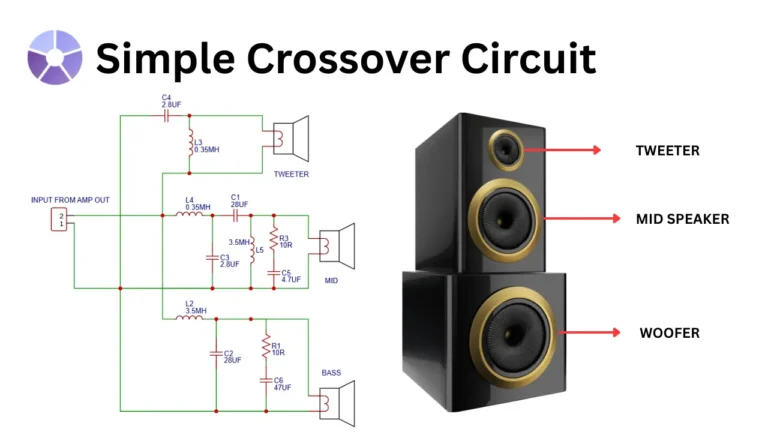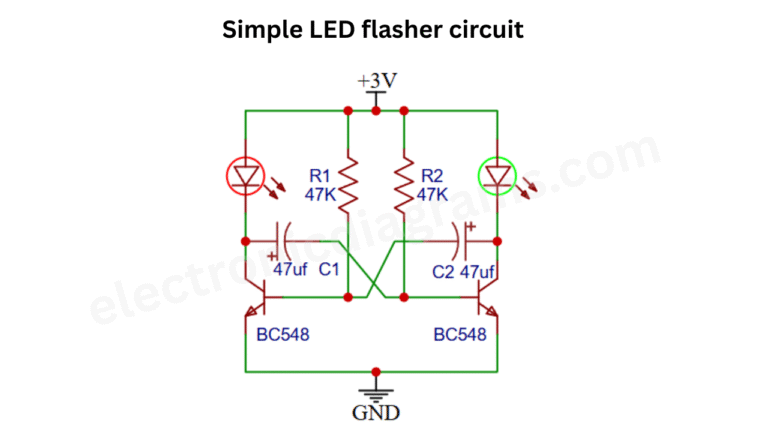Building small inverter circuit is very interesting and useful project. This simple inverter circuit is using two PNP transistor to convert the 12V DC to 220V AC voltage. This inverter circuit is a perfect for small electronic circuits like lights, mini fan and mobile chargers. With few number of electronic components you can also build this circuit.
MJE2955 Pinout

Pinout configuration
| Pin Number | Pin Name | Function | Symbol |
|---|---|---|---|
| 1 | Emitter | Current flows out of the transistor | E |
| 2 | Collector | Current flows into the transistor | C |
| 3 | Base | Controls the flow of current between collector and emitter | B |
Components required
| Component | Specification | Quantity |
|---|---|---|
| PNP Power Transistor | MJE2955 | 2 |
| Resistor | 68 ohms, 1W | 2 |
| Transformer | 12-0-12V to 220V AC | 1 |
| DC Power Source | 12V Battery | 1 |
| SPST Switch | On/Off Switch | 1 |
| Connecting Wires | As required | — |
| Heat Sink (optional) | For MJE2955 transistors | 2 (recommended) |
Circuit diagram

Construction of Inverter circuit
The power PNP transistor MJE2955 collector pin is is connected to the primary winding of 12-0-12 step up transformer. A 68 ohms 1 watt resistor is using for base voltage to turn on the transistors. From this two transistors the either one transistor is on and off, both transistor will never turn on at a time. so this acts as an oscillator.
12V dc is providing to the center tapping of the transformer using a switch. 220 V AC is taking out from the secondary winding of the transformer. You can use a 2 or 3A 12v center tap transformer for converting the DC voltage to AC voltage.
Working Explanation
From the given circuit diagram of inverter a 12V DC supply is providing to the center tapping of transformer. The voltage reaches to the 68 ohms of resistor R1 and R2 , which will turn on the two transistors alternatively. This create a push pull or square wave signal formation in the transformer winding.
The magnetic effect inside the transformer coil creates a mutual induction of the coils, which makes the transformer to produce 220V Ac at its secondary winding. The number of turns in the primary winding is lesser than the secondary winding. so the 12V primary oscillated voltage is 20 times higher than the secondary voltage.
Applications
- Charging mobile phone.
- Mini inverter.
- Emergency power backup
- Low-Cost Inverter for Rural Areas
- DIY Electronics Projects
- Testing small AC devices.



